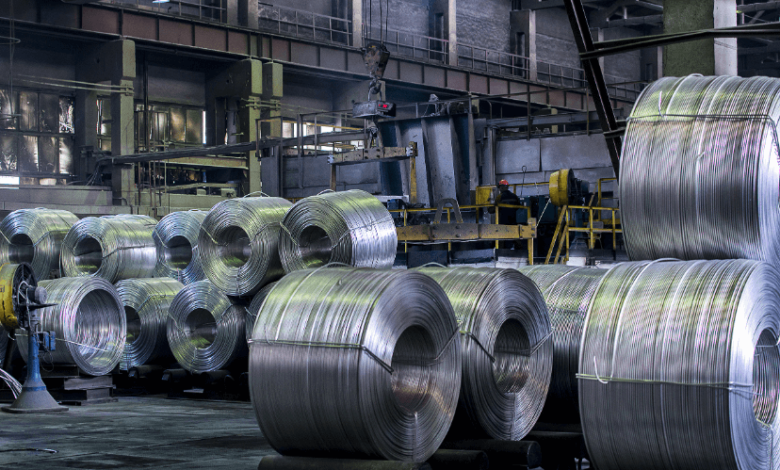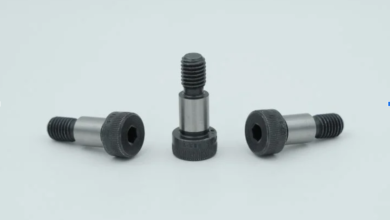The Role of Aluminium Circle in Modern Manufacturing

What is an Aluminium Circle?
An aluminium circle is a flat, circular sheet made from aluminum alloys, widely used in a variety of industries due to its excellent properties. These circles are cut from aluminum coils or sheets using high-precision blanking machines, ensuring a perfect round shape. Typically ranging in diameter from a few centimeters to over 60 cm, they are vital raw materials for the cookware, automotive, electronics, and lighting industries.
Aluminium circles are favored for their uniform thickness, smooth surface, and high malleability, making them ideal for processes such as deep drawing, spinning, stamping, and anodizing. Their applications are versatile and growing, owing to aluminum’s increasing relevance in eco-friendly, lightweight, and energy-efficient product design.
Industrial Applications
One of the primary markets for aluminium circle products is the cookware industry. Circles are used to manufacture pots, pans, kettles, and pressure cookers. Aluminum’s excellent thermal conductivity allows even heat distribution, which is essential for cookware performance. Moreover, its non-toxic and rust-resistant nature makes it a safe choice for food contact.
In the lighting industry, aluminium circles are used in lamp covers and reflectors. The reflective surface, once polished or anodized, helps focus and diffuse light efficiently. Similarly, in the automotive sector, circles are used in manufacturing vehicle components such as fuel tanks, brake systems, and body parts where light weight and durability are essential.
Other industries, including signage, electronics, and ventilation systems, also rely on aluminium discs for parts and housings, reinforcing the material’s widespread utility.
See also: Benefits of Lutron Home Automation for Residential and Commercial Spaces
Manufacturing Process
The production of an aluminium circle begins with selecting the right alloy. Common grades include 1050, 1060, 1070, 1100, and 3003—each chosen based on strength, flexibility, and corrosion resistance. These alloys are formed into large coils which are then cleaned, flattened, and fed into blanking machines.
The machines cut circular blanks using either mechanical or hydraulic punching, ensuring consistent dimensions. Some factories use rotary slitting and automated feeding systems to maximize efficiency. After cutting, the circles undergo further treatments such as annealing (to soften the material for forming), surface polishing, and protective film lamination depending on the end-use.
Factories often perform rigorous quality checks at every stage to ensure zero defects, including diameter accuracy, surface finish, and mechanical performance.
Advantages Over Other Metals
Compared to steel or copper, aluminum offers several benefits. Its low density makes it significantly lighter—critical for transportation and consumer goods. Aluminium circles are also more affordable than stainless steel while providing similar corrosion resistance when properly treated.
Moreover, aluminum’s natural recyclability adds to its appeal. Unlike many other metals, aluminum can be recycled repeatedly without degrading its properties. This makes aluminium circles a sustainable choice, particularly for manufacturers aiming to reduce their carbon footprint.
Another advantage is aluminum’s compatibility with surface finishes. It can be anodized, powder-coated, or mirror polished easily, allowing for both functional and aesthetic customizations. This flexibility makes aluminium circles suitable for a wide range of design requirements.
Importance in Cookware Manufacturing
In kitchenware production, the aluminium circle is perhaps the most critical raw component. Cookware manufacturers require discs that are smooth, oil-free, and without any mechanical or surface defects. For non-stick cookware, the circle must allow for excellent adhesion of coating layers, while also maintaining structural integrity during pressing and forming.
To meet these standards, aluminium circle suppliers provide degreased and anodized circles with protective films. These additional treatments prevent scratches and contamination, ensuring the final cookware products are visually appealing and functionally safe.
Many cookware brands specify alloy grades like 1050 or 1100 for their softness and workability, enabling efficient deep drawing into cooking vessels without cracks or warping.
Growing Global Demand
With the rise in urbanization and disposable income, there’s increasing demand for high-quality, affordable cookware, especially in Asia, the Middle East, and Africa. This surge has significantly boosted the global trade of aluminium circles.
Exporters in countries like China dominate the market due to their advanced manufacturing facilities, lower labor costs, and ability to fulfill large orders on tight deadlines. Many Chinese suppliers also offer customized services, including size, thickness, and surface treatment variations, catering to both OEM and branded manufacturers worldwide.
Quality and Standards
Reputable aluminium circle manufacturers adhere to strict international standards such as ISO 9001 for quality management and ISO 14001 for environmental practices. Some may also comply with food-grade certifications such as FDA or LFGB, particularly when supplying for cookware applications.
Buyers often look for consistent diameter tolerance, chemical composition reports, and traceability of materials. Surface cleanliness, free from oil and oxidation, is also a critical quality benchmark.
Suppliers offering in-house testing laboratories and continuous quality control are preferred by large importers and brand manufacturers, ensuring minimal product rejections and maintaining supply chain reliability.
Innovations in Circle Production
With advancing technology, aluminium circle production has also evolved. Automation has led to more accurate cutting, higher throughput, and lower labor dependency. Modern CNC and servo-controlled blanking lines allow for rapid switching between sizes and thicknesses.
Some manufacturers are also incorporating AI-based monitoring systems that track machine performance, material usage, and product consistency in real-time. These innovations enhance productivity, reduce errors, and improve delivery timelines.
Conclusion
The aluminium circle is far more than a metal disc. It is the cornerstone of many everyday products that require durability, efficiency, and precision. From kitchen pans to industrial lighting, its applications are varied and expanding.
As industries push toward lightweight, recyclable, and high-performance materials, the role of aluminum circles will only grow stronger. Manufacturers, especially those in cookware and lighting, continue to rely on trusted suppliers who deliver consistent quality, customization, and sustainability.
Understanding the technical, economic, and environmental aspects of aluminium circles allows businesses to make smarter sourcing decisions, ensuring they remain competitive in a fast-changing global market.




